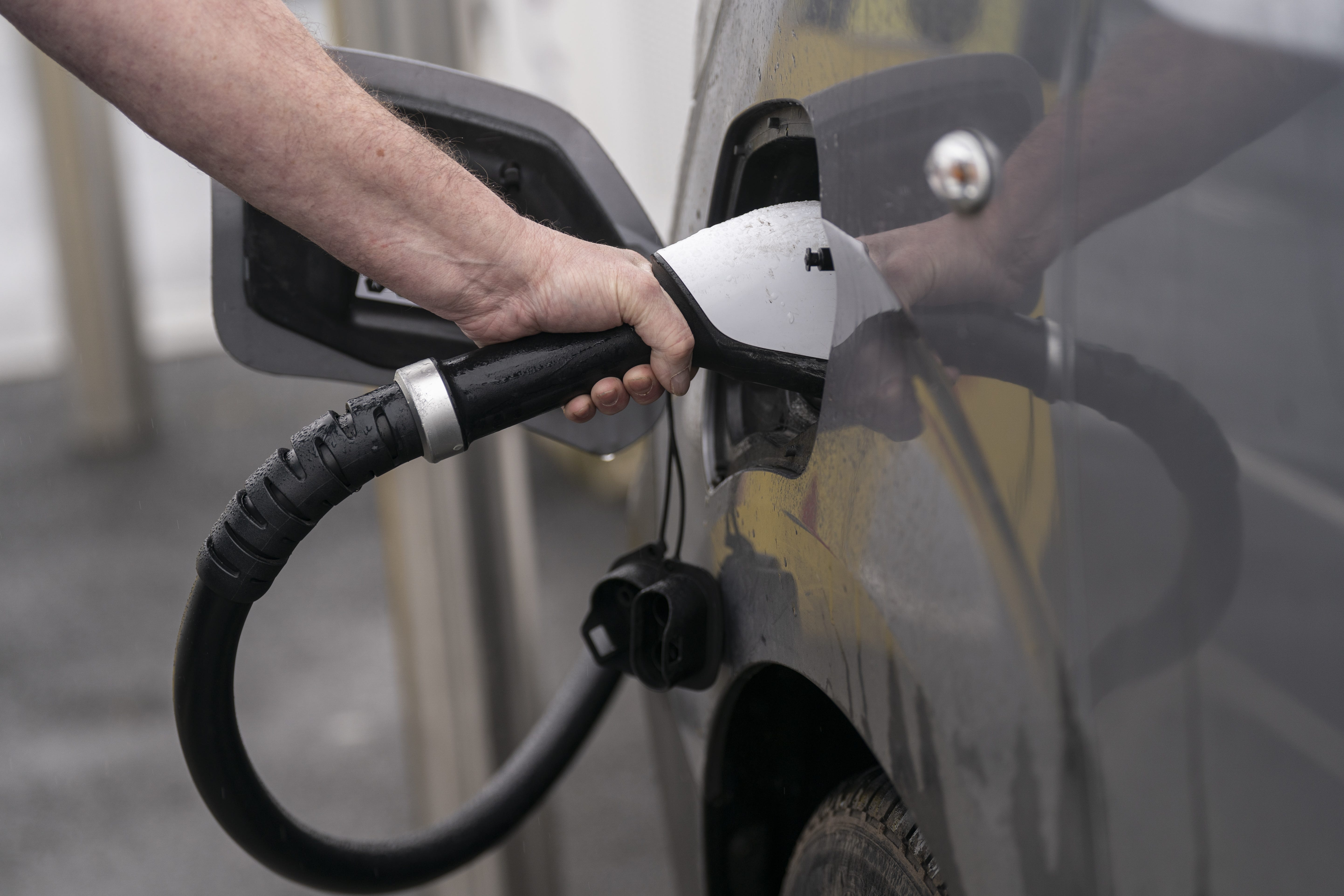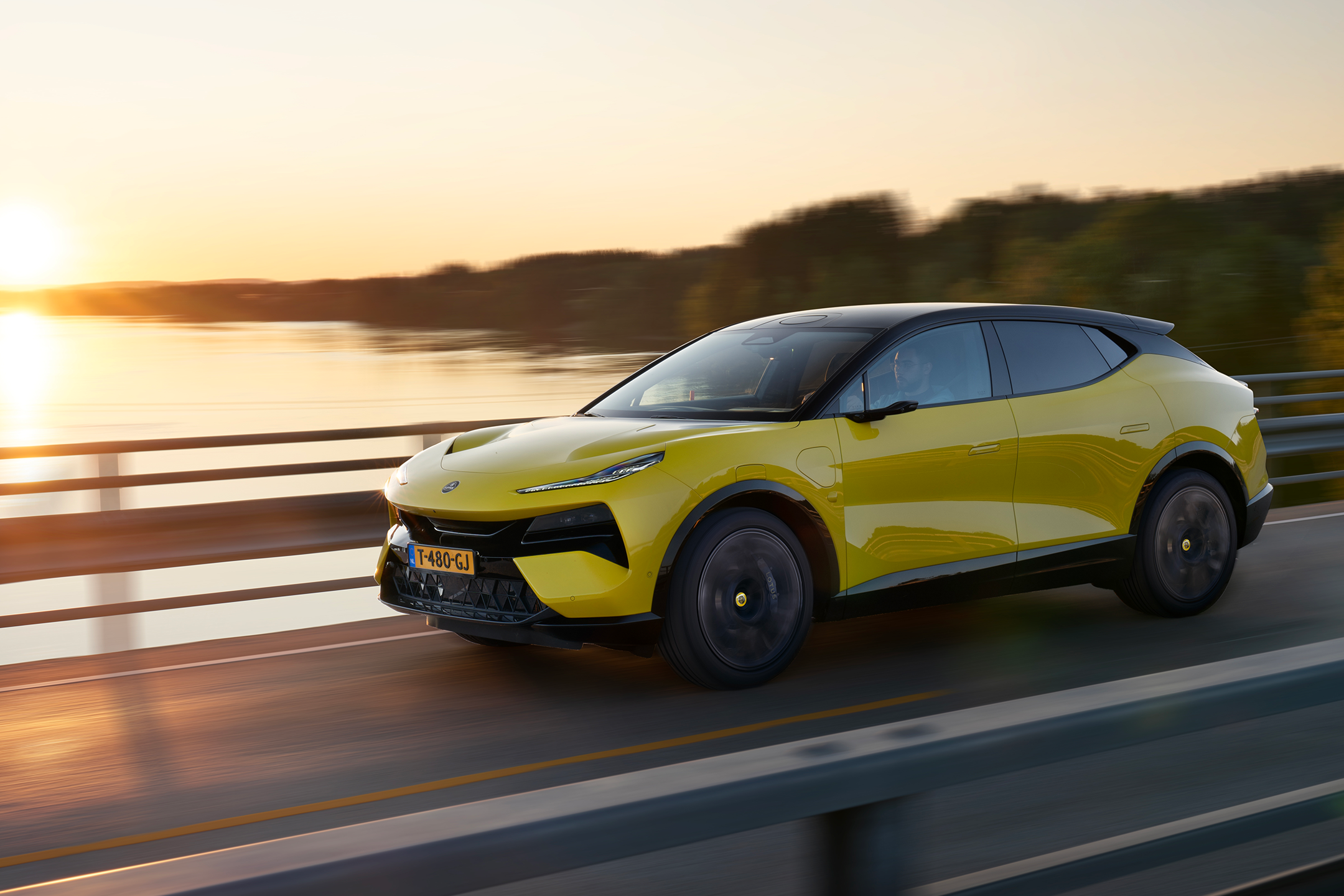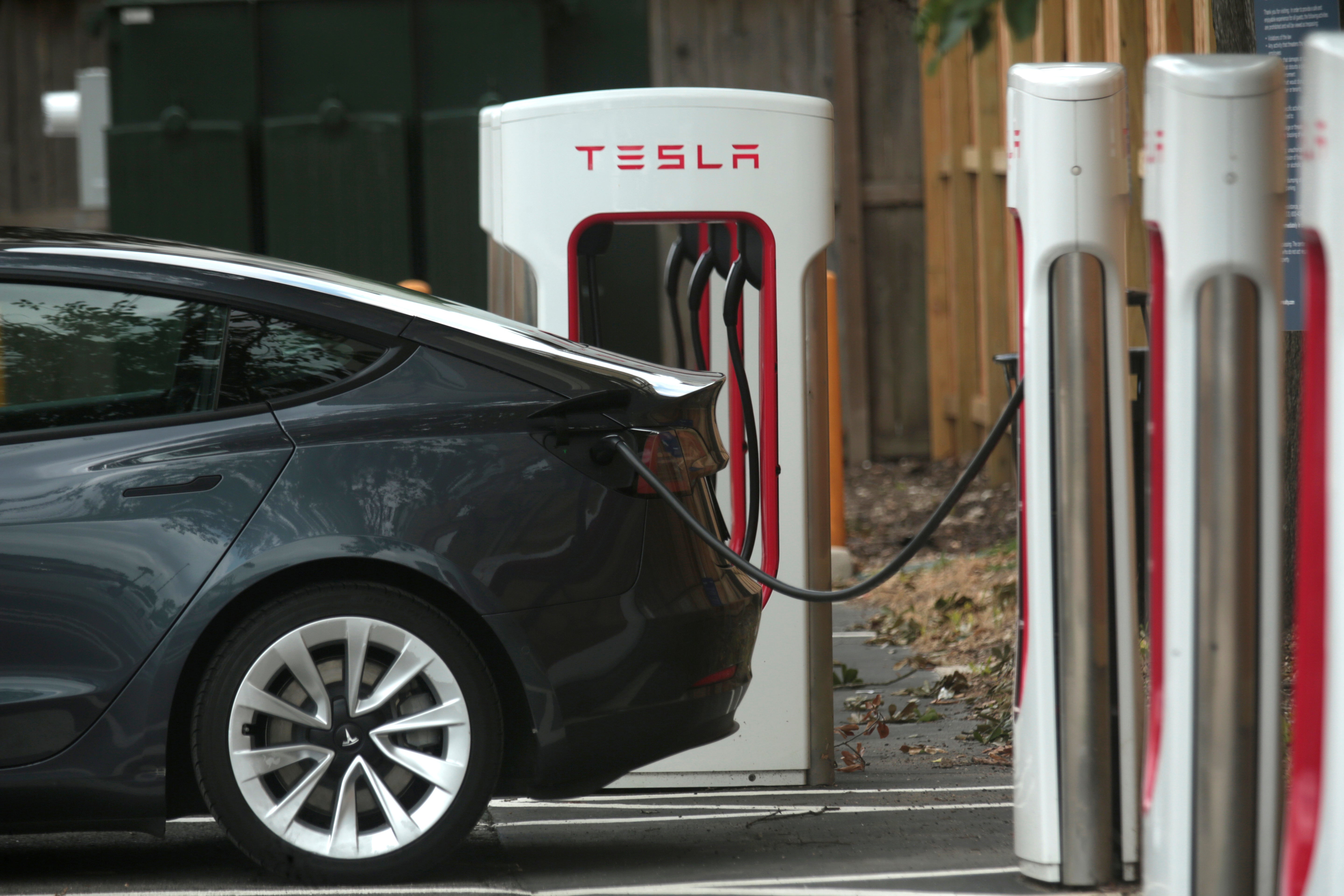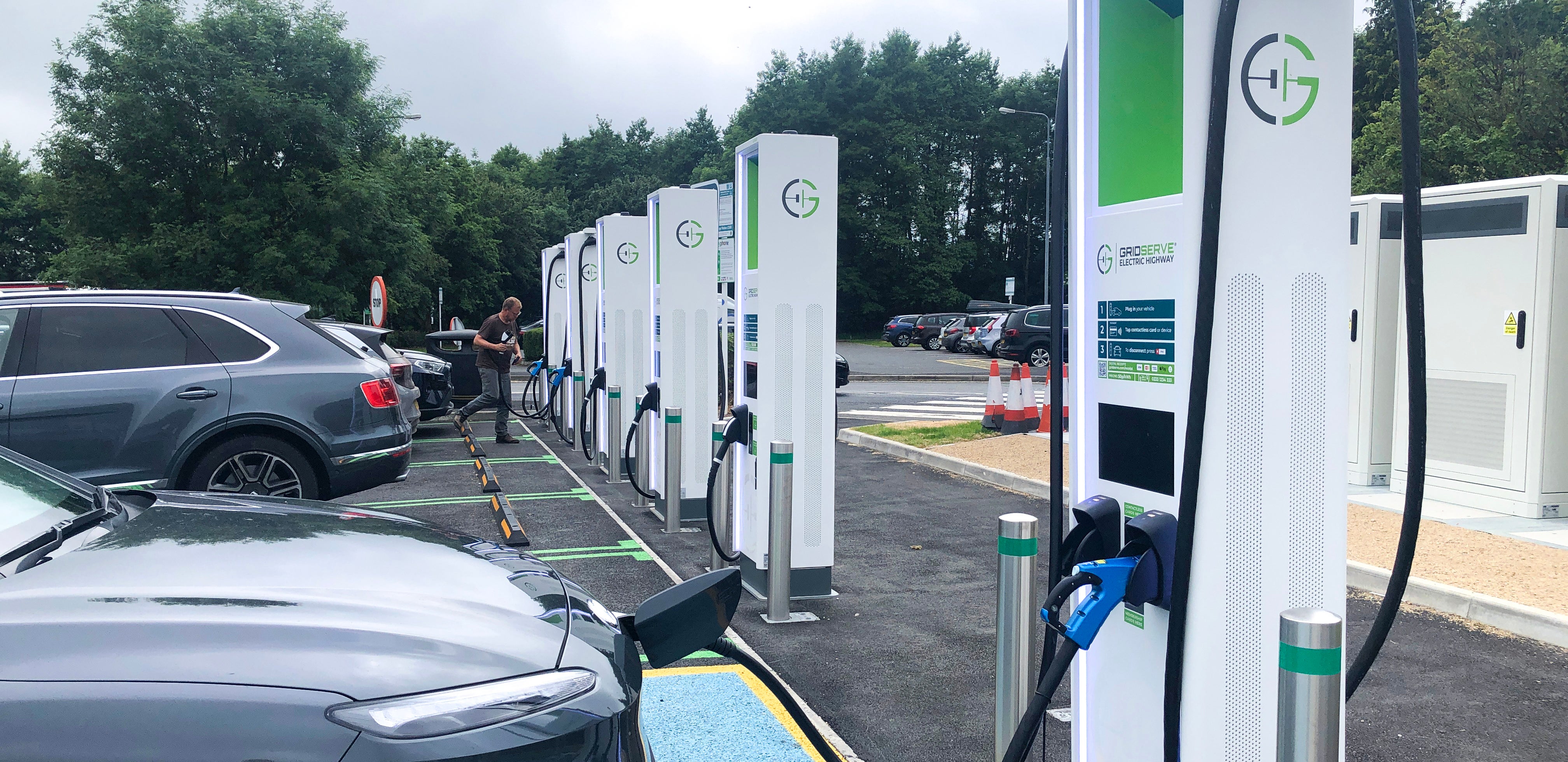Electric car chargers and charging your EV on the road: all you need to know in 2025
Your complete guide to everything you need to know about charging your electric car in 2025.

The Independent's Electric Vehicles Channel is sponsored by E.ON Next.
Charging an electric car is quite different to filling one with petrol or diesel. It can be done at home, for a start, and although charge speeds have improved significantly in recent years, topping up a battery still tanks longer than filling a fuel tank. It also tends to cost more too, at least at public charge stations.
If you’re new to EVs, charging might seem intimidating. Different cars charge around different speeds, and the speed of charge stations can vary too, along with the price. Then there are subscriptions to consider, which can make charging cheaper, and how cold weather can affect how quickly an EV charges its battery.
To help you understand more about electric car charging, we have outlined the basics with a extensive Q&A section below. This is aimed at the UK market, but the information given here can be applied to electric cars and chargers in other countries too.
It is important to understand the basics when it comes to EV charging. That way, you’ll be better-informed when buying your first electric car, and not overwhelmed by unfamiliar statistics like charge rate, system voltage and battery efficiency.
Do all electric cars charge at the same speed?
No, there can be a huge difference between the charge speed of two electric cars. Charge speed is usually measured in kilowatts, or kW. The fastest-charging EVs can fill their battery at a rate of over 300 kW, while slower-charging cars fill at around 75 kW.
Many modern EVs have a maximum charge rate somewhere between 100 and 250 kW, but they can only achieve that rate when plugged into a suitably powerful charger. So-called ultra-rapid public chargers often advertise their maximum charge rate, with 150 kW and 175 kW being among the more common high-speed options.
Some public chargers operate at up to 350 kW, while home chargers – which are usually called wallbox chargers and use AC electricity instead of DC – typically operate between 3 kW and 7 kW, making them better-suited to an overnight fill instead of a quick top-up.
Which electric car charges the quickest?

As of late-2024, the fastest-charging EV for sale in the UK is the Lotus Eletre, which can fill its battery at up to 350 kW – conveniently, that’s also the same rate as the most powerful public charger. Second place belongs to the closely-related Audi e-tron GT and Porsche Taycan, at about 320 kW, followed by the Audi e-tron Q6 at 270 kW.
With such high charge rates, these cars can fill their batteries from 10 to 80 per cent in under 20 minutes, when using an equally powerful charger.
EVs with lower maximum charge rates charge more slowly, but these tend to also have smaller batteries than the Porsches, Audis and Lotus mentioned above.
Read our guide to the fastest-charging EVs on sale in the UK in 2025
What are rapid car chargers and how do they differ from normal EV chargers?
Generally speaking, slow chargers operate at up to 3.6 kW, while fast chargers tend to run at 7 kW, 11 kW or 22 kW. These are all AC (alternating current) chargers, like those found at home or at destinations like hotels where electric cars are expected to be parked for some time.
Rapid chargers use DC (direct current) and operate at up to 50 kW, while ultra-rapid chargers span all the way from 50 kW to 350 kW. From a user’s point of view, all EV chargers work in broadly the same way, in that they plug into the car’s charge port and deliver electricity.
Rapid and Ultra-rapid chargers in the UK and Europe use a technology called CCS, which has a slightly different charger connection to less powerful chargers. But, all you have to do is open the little flap that covers the lower half of your car’s charge port, and the CCS charger will attach, then lock into place during the charge process.
It is also worth noting that faster chargers tend to cost more, and this is especially true for ultra-rapid chargers in convenient locations like motorway service stations.
What is the fastest way to charge an electric car?
To get the quickest possible charge speed for your EV you need to plug it into an equally powerful charger. For example, if your car can charge at up to 200 kW, you’ll need to finder a charger at least that powerful, such as one capable of 350 kW. Charge speed also depends on how fully the battery already is, and also its temperature. Sometimes how busy the charger is can also have an affect, with slower charge speeds expected when more EVs are plugged into the same station.
It is also worth remembering that most EVs only reach their maximum charge rate briefly, since as batteries fill up they charge more slowly. To get the highest charge speed possible, use a suitably powerful charger when your battery is both warm (or it has been pre-conditioned) and below 20 per cent.

Will my electric car always charge at the same speed?
No, unfortunately not. There are quite a few factors that determine the charge speed of any electric car. The first factors are obvious, as these are the maximum charge rate of both the car and the charger you’re using. If you plug a 320 kW car into a 150 kW charger, then you’ll get no more than 150 kW. Similarly, a 150 kW car plugged into a 350 kW charger won’t get anything more than 150 kW.
Also affecting charge speed is how empty batteries charge more quickly than full ones, and this is especially obvious when filling beyond 80 per cent, when the charge speed slows significantly. It is therefore best to plan your rapid-charging stops when your EV’s battery is fairly empty, instead of seeking out a charger near the start of your journey. Brimming the battery to 100 per cent before you set off is a good idea if you’re charging at home and have plenty of time, but otherwise you’re best filling up later.
Temperature also affects EV charge speed – so much so, that many EVs will warm their battery as you approach a charge station, providing you’re using the car’s own navigation system to get there.
Do electric cars charge more slowly in winter?
Yes, they do. Like all products that use lithium-ion batteries (like your phone, camera and laptop), electric cars perform less well when cold. As mentioned above, many EVs pre-condition their battery, which involves warming it up, so it’ll fill more quickly when you arrive at the charge station.
It’s also possible to pre-condition an EV while it’s plugged in, so that it is nice and warm when you set off – good for you, since the cabin will be warm, and good for the car, as it’ll run more efficiently, and therefore go further, when its battery is at the right temperature.
Should I stop charging my EV at 80 per cent?
It is good practice to only fast- or rapid-charge up to 80 per cent. There are two reasons for this: firstly, electric car batteries tend to charge much more slowly beyond 80 per cent, and secondly, lithium batteries tend to have a longer life if they are charged to 100 per cent less frequently, especially at high speed.
Most EVs can be set to stop charging at a certain percentage. It is worth setting this to 80 per cent in a bid to protect the lifespan of your battery, but occasionally charging to 100 per cent (especially with a low-powered home charge) is fine.
What’s the difference between 400-volt and 800-volt electric cars?
Most electric cars operate at 400 volts, while some work at 800 volts. The former is cheaper and generally uses heavier components operating at double the amps and a higher current, making the system less efficient. The end result is that 400-volt EVs can’t charge as quickly as 800-volt EVs. The former generally has a maximum charge rate of 250 kW (depending on car model; some can only manage 75 kW or 100 kW), while 800-volt EVs can charge at up to 350 kW. This is only relevant when using equally-powerful public chargers though, as 400 and 800 volt cars all have the same maximum charge rate when using an AC wallbox-style charger at home.
How much does it cost to charge an electric car?
The cost of charging an EV can vary considerably. Charge the battery at home using a low-cost tariff and a complete fill can cost just £5, or even less for smaller batteries. The current Next Drive rate, as of November 2024, is £0.067 per kWh.
Short for kilowatt-hour, kWh is the unit of measurement for car batteries, and is an indication of how much energy they can store. A small electric car like the Mini Cooper E has a 36.6 kWh battery, while a mid-size car like the Polestar 2 has battery size options of 69 kWH and 82 kWh, and a larger EV like the Porsche Macan has a 100 kWh battery capacity.
Public chargers are much more expensive, with prices usually increasing with speed and convenience. Some powerful, 350 kW chargers can cost around £0.79 per kWh, while much slower public chargers, like those attached to lampposts and generally operating at 5 kW, cost around £0.59 per kWh. In some cases these are cheaper to use at night, with some costs falling to £0.39 per kWh between midnight and 7am.
Is it cheaper to charge an electric car at home?
Yes, it is significantly cheaper to charge an EV at home, compared to using a public charger. Unless, of course, you find a free charger, which is sometimes the case at hotels.
For example, a high-speed public charger can cost as much as 79p or even 89p per kWh, and even a low-speed lamppost charger can still cost between 39p and 59p per kWh.
Compare this to specialised energy tariffs for home charging, which can cost less than 7p per kWh. That’s over five times cheaper than the lamppost charger, and at 7.4kW, it’s more powerful than the lamppost too, since they often operate at 5kW.
Is it cheaper to charge an EV at night?
Yes, it is often cheaper to charge an EV at night because that’s when electricity is usually available at a lower price per kWh. For example, a lamppost charger we frequently use in South East London costs 59p per kWh during the day, but 39p per kWh between 12am and 7am. This is also true for home charging, with smart home charging tariffs tending to be cheaper between the hours of 12am and 7am.
Most EVs have a scheduling system where you can programme the car to only charge at a certain time of day (or night). That way, you can plug it into the charger during the day, but set the car so that it only starts filling its battery at midnight, when electricity is cheaper.
Can I charge an electric car with solar panels?
Yes, you can. Broadly speaking, there are two approaches here. One is to have solar panels that feed energy directly into your home, so they’ll contribute to your EV if it’s plugged into the charger during the day. The other approach is to add a battery to your home, which is charged up by the solar panels, then stores energy until you need it, such as when charging your EV overnight. Since you generated the electricity yourself using the solar panels, this power is effectively free.
How do I pay to use a public EV charger?
This used to be a minefield, with each EV charging company using a different phone app, or even requiring the use of a different RFID tag or contactless membership card. These methods still exist in some cases, but it’s now possible to pay using a credit or debit card at most public charger.
Those that don’t accept card payments, such as lamppost chargers, use an app, which then accepts payment from a credit card (or you can often use Apple Pay or other such services, too). Often, there’s a QR code on the charge, which when scanned takes you to a website where you can start the charge process and make a payment.

Can I pay for EV charging with a subscription?
Yes, many EV charge networks offer subscription models. Usually paid monthly, these lower the price per kWh to use the charge network. Paying for such a subscription can be particularly useful if you frequently use the same charge station, or the same brand of charge station in multiple locations.
As an example, E.ON’s Plus subscription costs £5.99 a month and reduces the cost of using public chargers by 10 per cent. Similarly, Ionity chargers normally costs £0.74p per kWh when you use a credit card, but this can be reduced to either £0.53p per kWh by paying £5.49 a month, or to £0.43p per kWh with a £10.50 subscription.
Meanwhile, a £7.85 subscription to the BP Pulse charge network reduces the price per kWh by 20 per cent. OVO Energy also has two monthly subscription models, priced at £2 for a 10 per cent discount and £8 for 15 per cent off; the latter also gives access to an EV route planner and exclusive charging rewards.
Can I use a Tesla Supercharger with a different EV?
Yes, you can. Previously available exclusively to Tesla drivers, many (but not all) of Tesla’s Supercharger charging stations can be used by electric cars from other manufacturers. Although you can simply drive up to a Supercharger and use it (via the Tesla smartphone app), subscribing to Tesla’s charge network costs £8.99 a month, or £90 a year, and lowers the price per kWh.
Prices vary from one Supercharger station to another, but they are generally cheaper than other high-speed chargers. At the time of writing in late-2024, the price of a Supercharger in Greenwich, London ranges from £0.51 to £0.63 for non-members, depending on the time of day, but just £0.39 to £0.48 for paying subscribers.
Adding 70 kWh of charge to an EV during off-peak times would cost £35.70 for non-members, or £27.30 for members. The difference of £8.40 almost entirely covers the £8.99 monthly subscription with a single charge.
Can you charge an electric car from a three-pin plug socket?
Electric car manufacturers make cables for plugging their cars directly into a domestic socket. However, while this can be helpful in an emergency, or when you just need a few extra miles of energy during an overnight stop, the charge rate is very, very slow.
The car will only charge at around 1 or 2 kW, which is five times slower than a home wallbox-style charger, and more than 100 times slower than what many electric cars are capable of. This can mean adding just a handful of miles of range per hour, and a full charge can take well over 24 hours. It isn’t a practical solution for most drivers, but is handy if you’re visiting friends or family who don’t have a charger.
Plug in all night, offer to buy them breakfast, and you’ll have at least added a dozen-or-so miles of range. We should also state that car manufacturers warn against using extension cables to charge an EV.
Do electric cars charge themselves while you drive?
In a way, yes. Electric cars have a system called regenerative braking, where the motor is used as a generator when coasting or braking. This slows the car just as engine braking does in non-electric vehicles, but has the added benefit of creating energy, which is then harvested and fed back into the battery. Essentially, with regenerative braking switched on, the more the driver lifts the accelerator, the more their EV slows down and the more energy heads back into the battery.
It’s a satisfying aspect to EV driving, and means the friction brakes (using the traditional discs and pads) are rarely used, so last much longer than normal. However, compared to plugging into a charger only a small amount of electricity is generated by regenerative braking; if you coast downhill for a long time you might see the range indicator increase by a single mile, but it’s better than nothing.
How do you find the nearest electric car charger?
The navigation system of an EV is a good place to start, as many will route you via a charge station if a top-up is needed to reach your destination. Tesla’s is by far the best at this, as it produces n accurate, reliable and detailed breakdown of where to stop, how long to charge for, and how much charge you’ll have when you reach your destination.
Smartphone-based systems like Google Maps and Apple Maps aren’t as good at this, primarily because apps running through Apple CarPlay or Android Auto have no access to your car’s charge state or efficiency, so don’t know when you should stop for a battery top-up. They can still be used to navigate to charge stations, and they often show how many chargers each station has, along with the type and maximum speed of each charger, but you’ll have to estimate where best to stop based on your own understanding of the car’s range and efficiency.
One of the best EV charge station maps is called ZapMap. This app shows charger location and speed, plus there’s a feedback system where users can report problems with faulty chargers, or leave notes explaining precisely where chargers are located, since they’re sometimes installed at the far side of service stations car parks.






Join our commenting forum
Join thought-provoking conversations, follow other Independent readers and see their replies
Comments